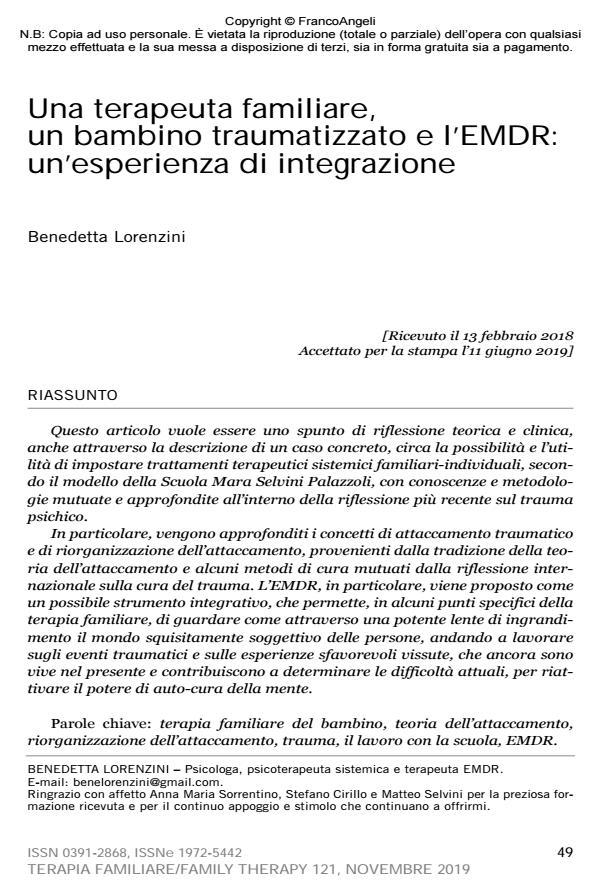A family therapist, a traumatised child and the EMDR: an integration experience
Journal title TERAPIA FAMILIARE
Author/s Benedetta Lorenzini
Publishing Year 2020 Issue 2019/121
Language Italian Pages 21 P. 49-69 File size 114 KB
DOI 10.3280/TF2019-121003
DOI is like a bar code for intellectual property: to have more infomation
click here
Below, you can see the article first page
If you want to buy this article in PDF format, you can do it, following the instructions to buy download credits

FrancoAngeli is member of Publishers International Linking Association, Inc (PILA), a not-for-profit association which run the CrossRef service enabling links to and from online scholarly content.
This article should suggest theoretical and clinical thinking, even through the description of a specific case, concerning the possibility and the usefulness to provide individual-relational systemic therapies in accordance with the model provided by the school Mara Selvini Palazzoli, with knowledge and methodologies borrowed and deepened within the most recent reflection on the psychic trauma. In particular, concepts of the traumatic attachment and the attachment reorganization coming from the tradition of the attachment theory and some treatment methods borrowed from the international reflection on the therapy for trauma are thoroughly developed. EMDR is in particular suggested as a possible complementary tool that in some specific moments within a family therapy allows to look the purely subjective world of the people like through a strong and powerful magnifying glass, processing the traumatic and bad experienced events still alive in the present memories which enable to identify the present difficulties in order to reactivate the self-care power of the mind.
Keywords: Family child therapy, attachment theory, attachment reorganization, trauma, working with the school, EMDR.
Benedetta Lorenzini, Una terapeuta familiare, un bambino traumatizzato e l’EMDR: un’esperienza di integrazione in "TERAPIA FAMILIARE" 121/2019, pp 49-69, DOI: 10.3280/TF2019-121003